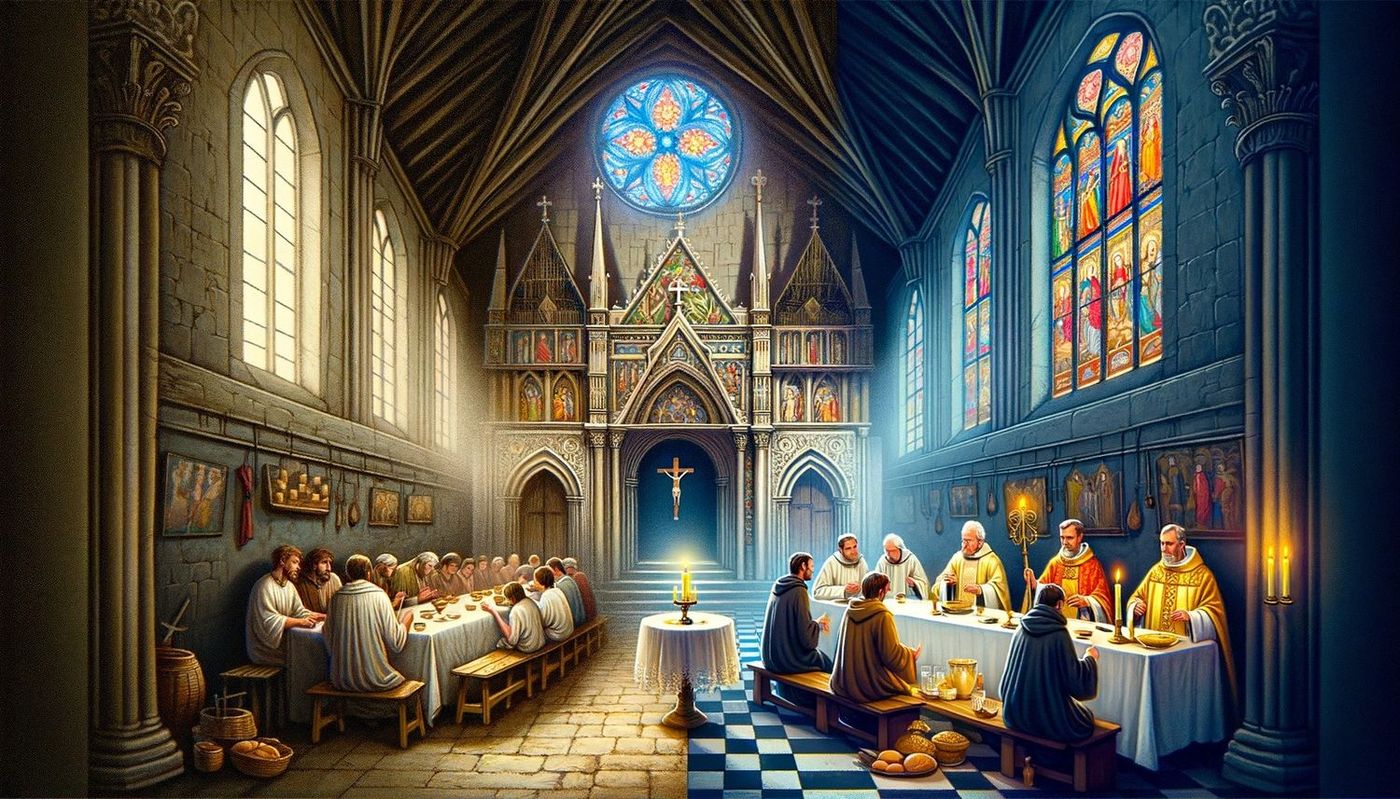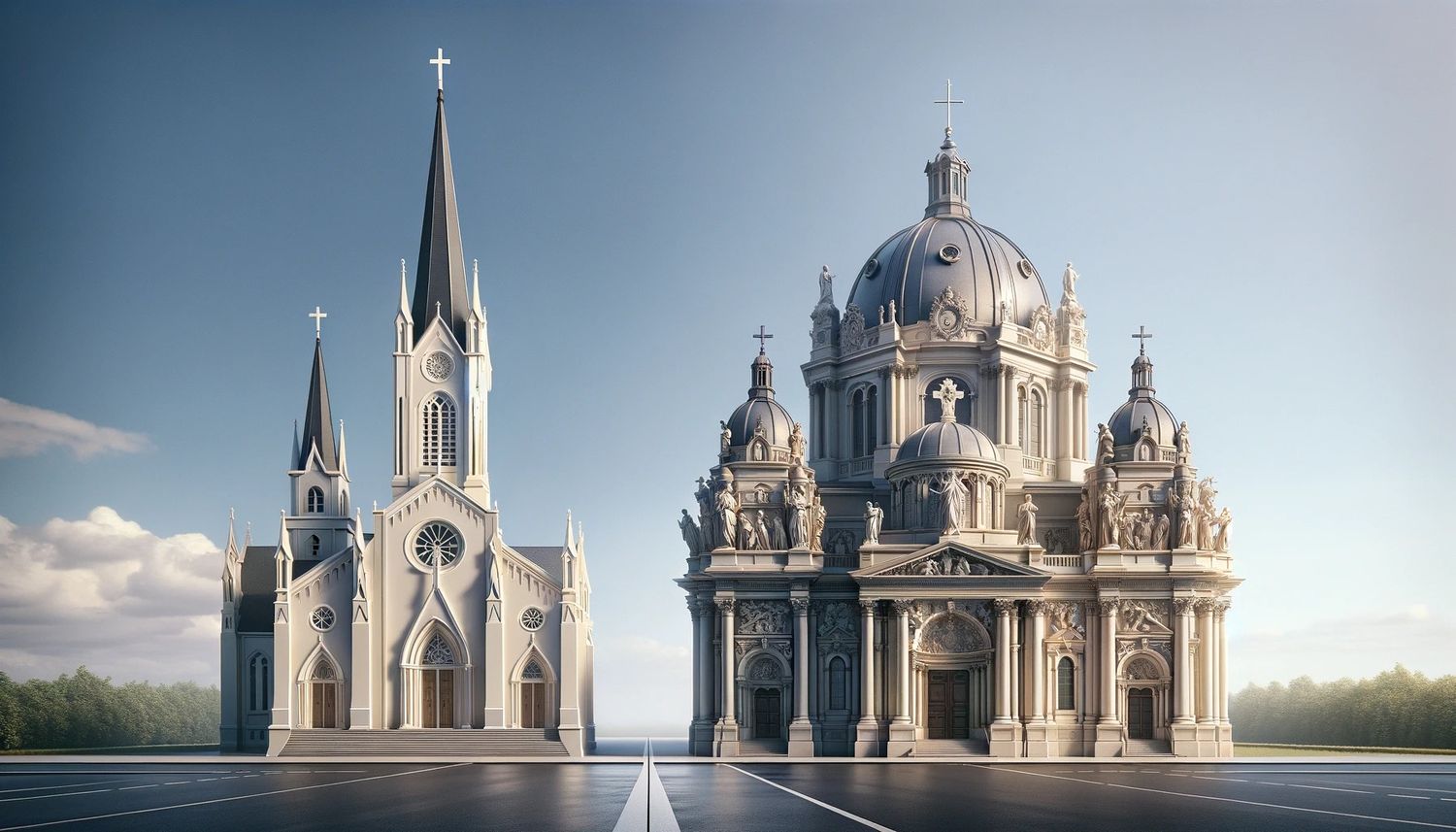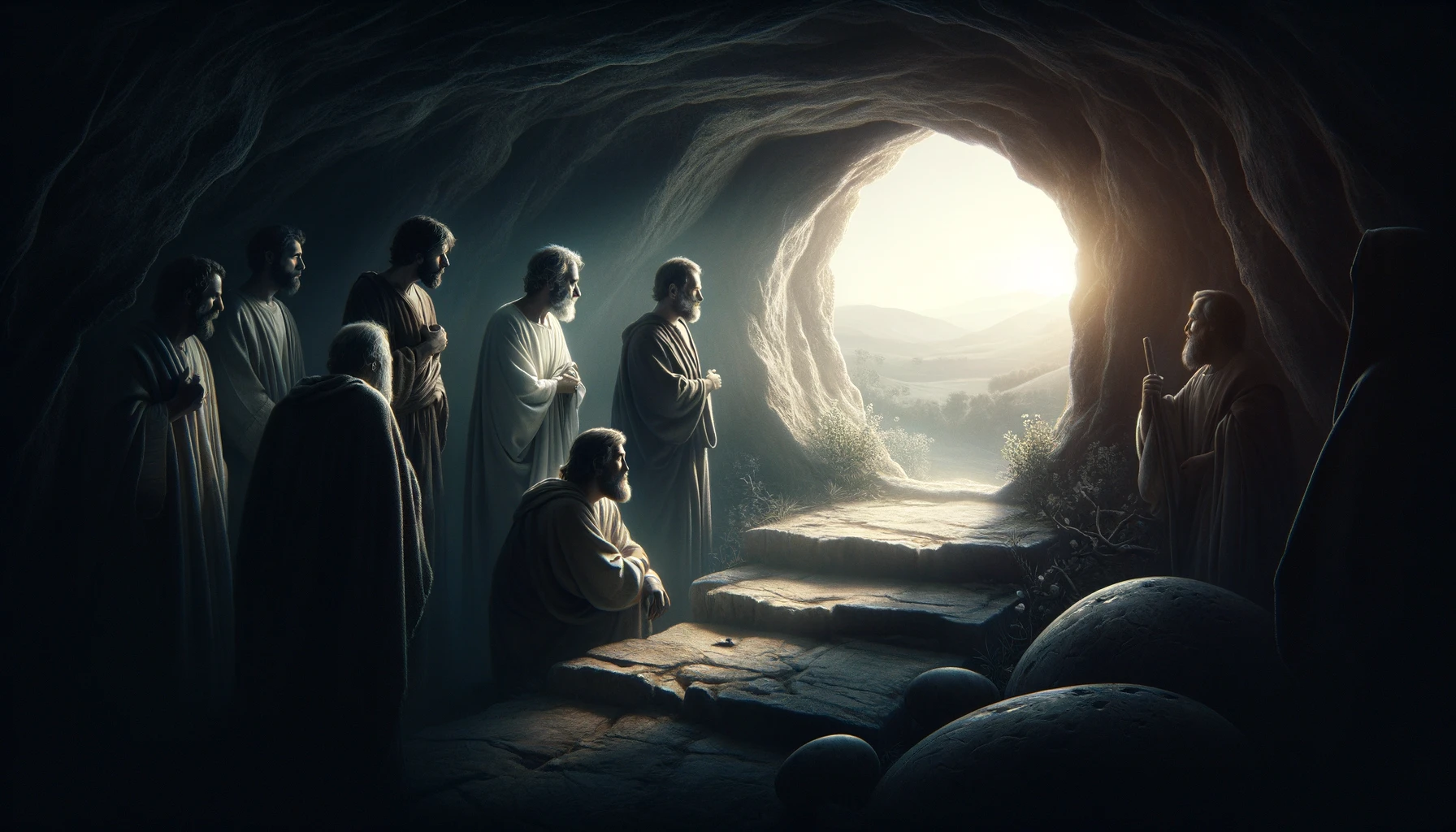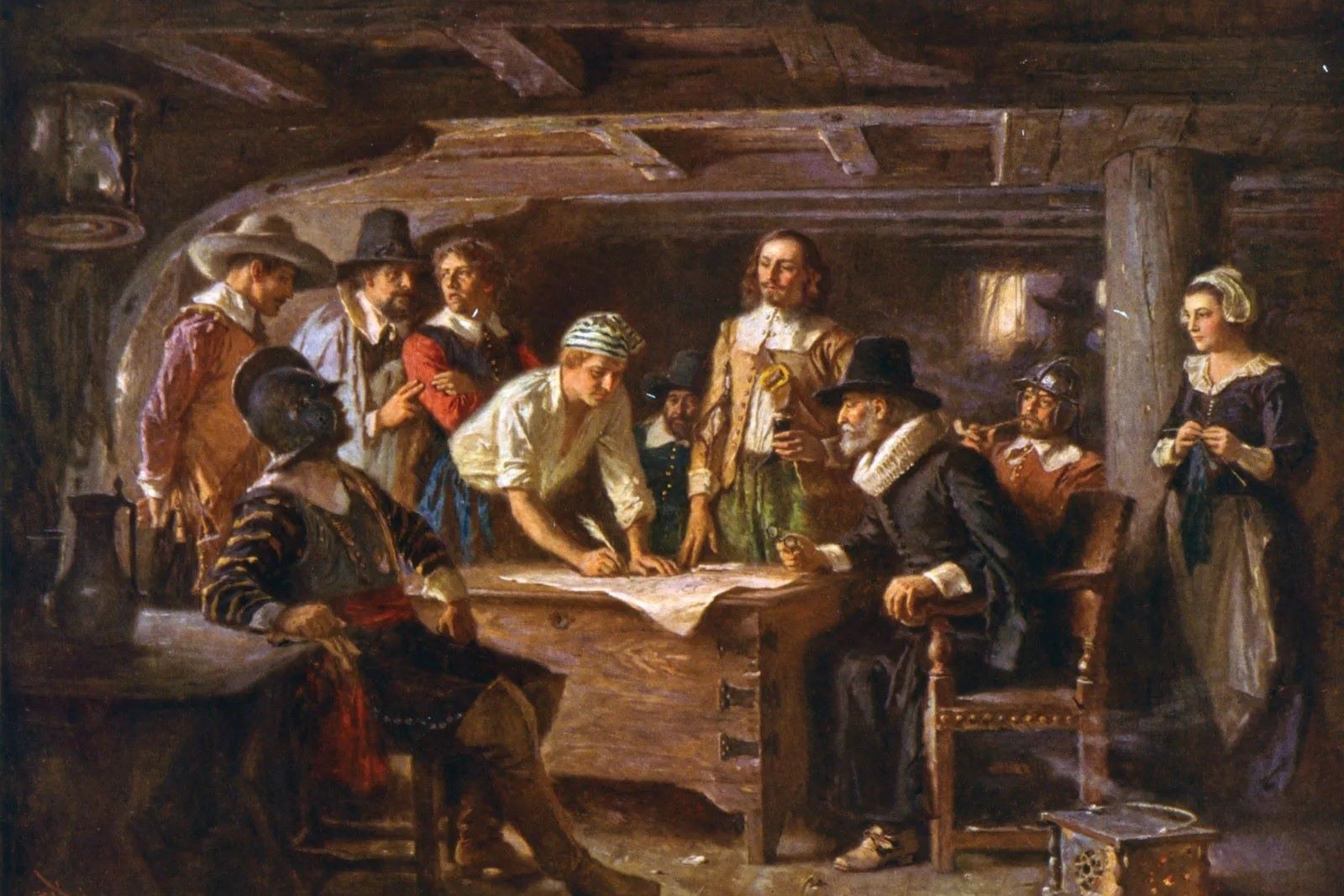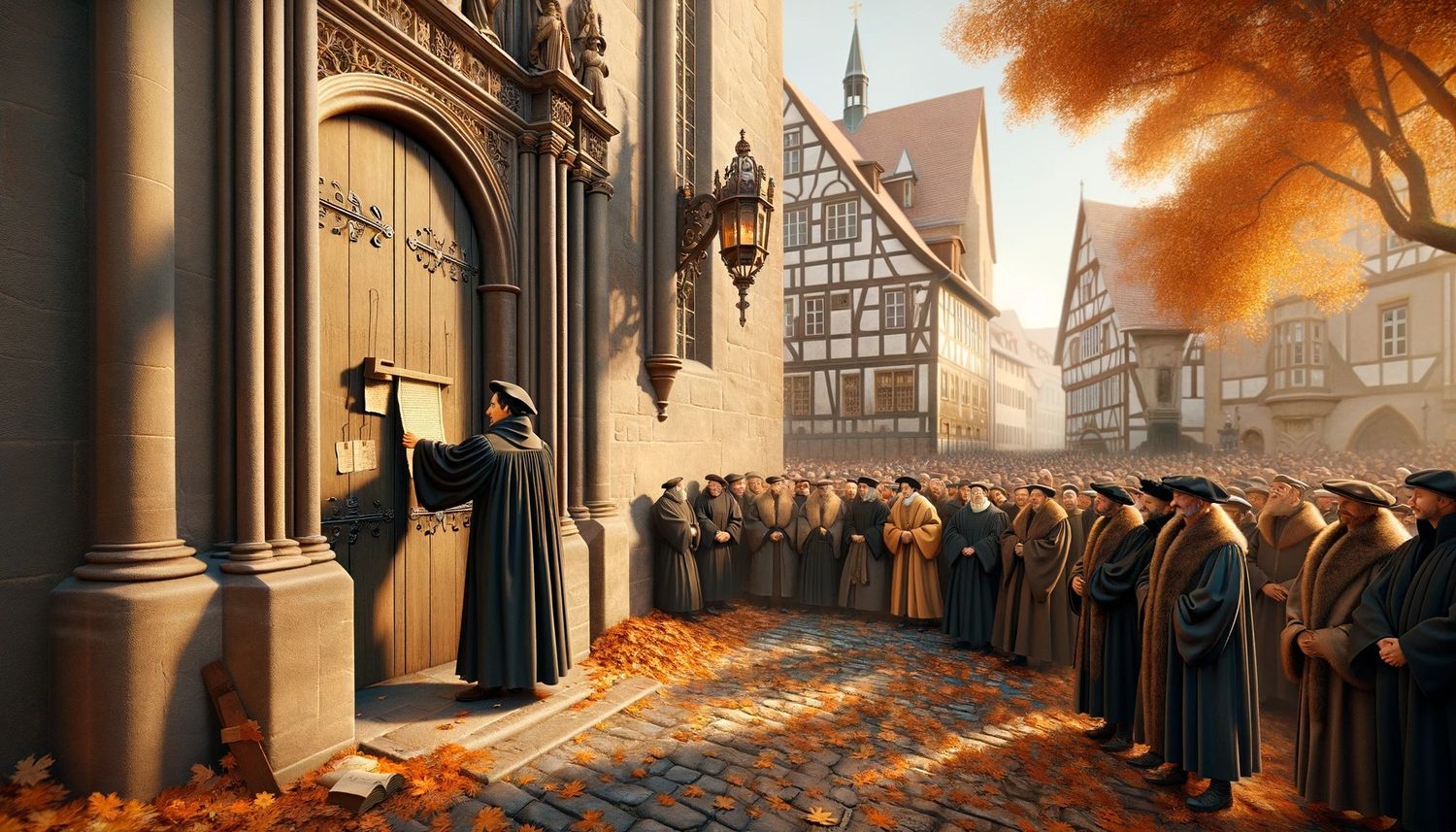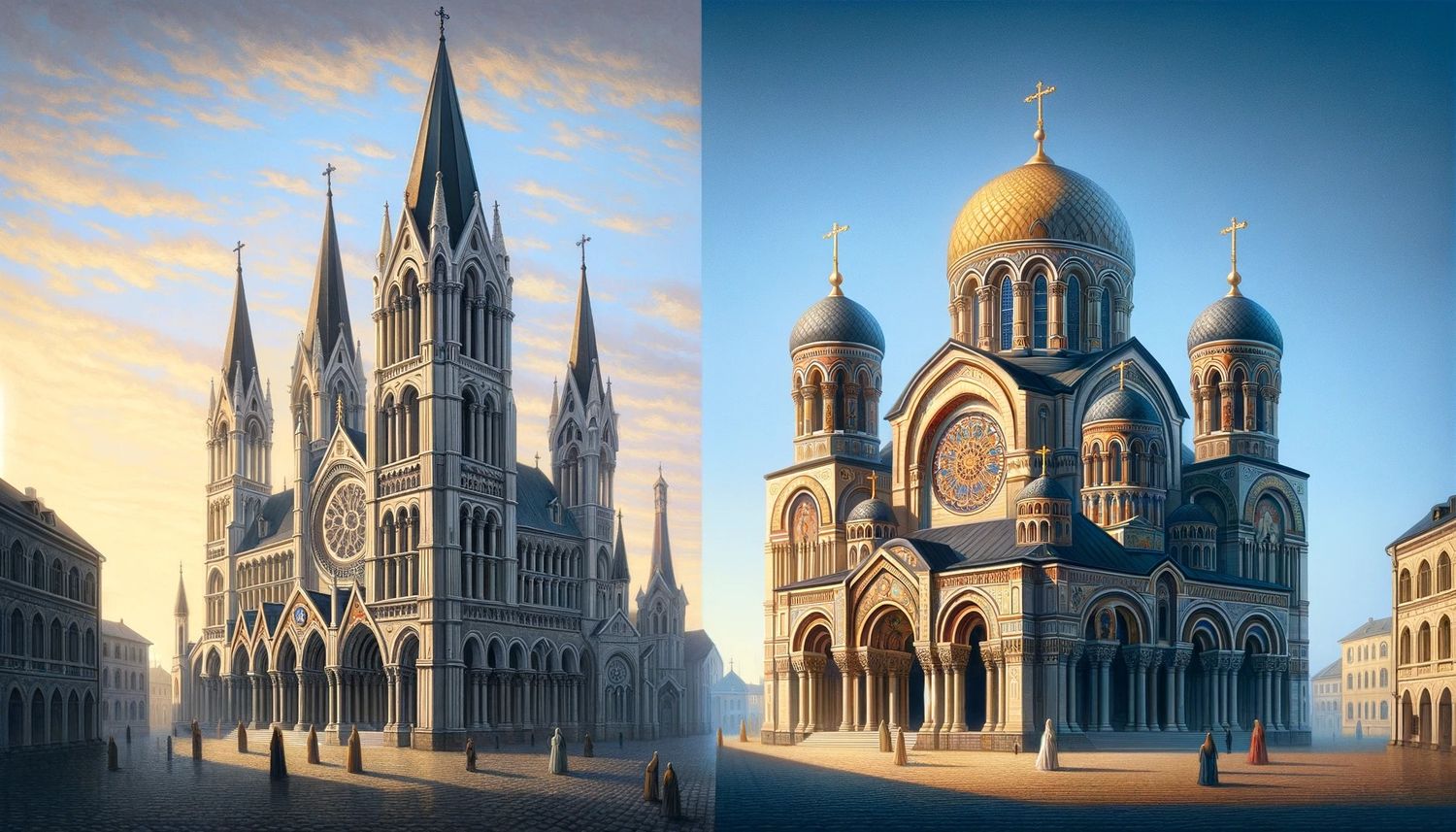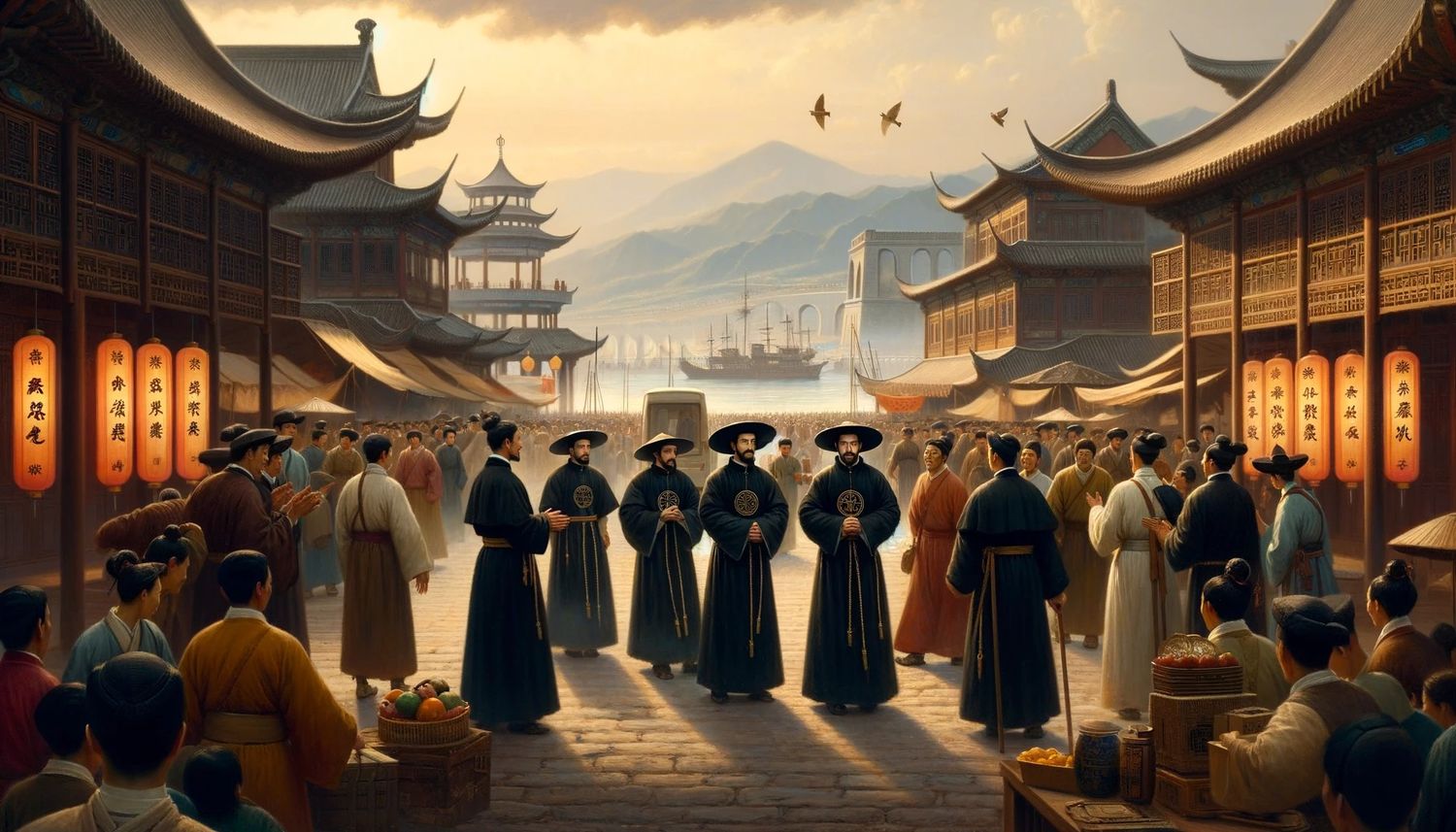Home>Theology and Spirituality>Which Came First: Catholicism Or Protestantism
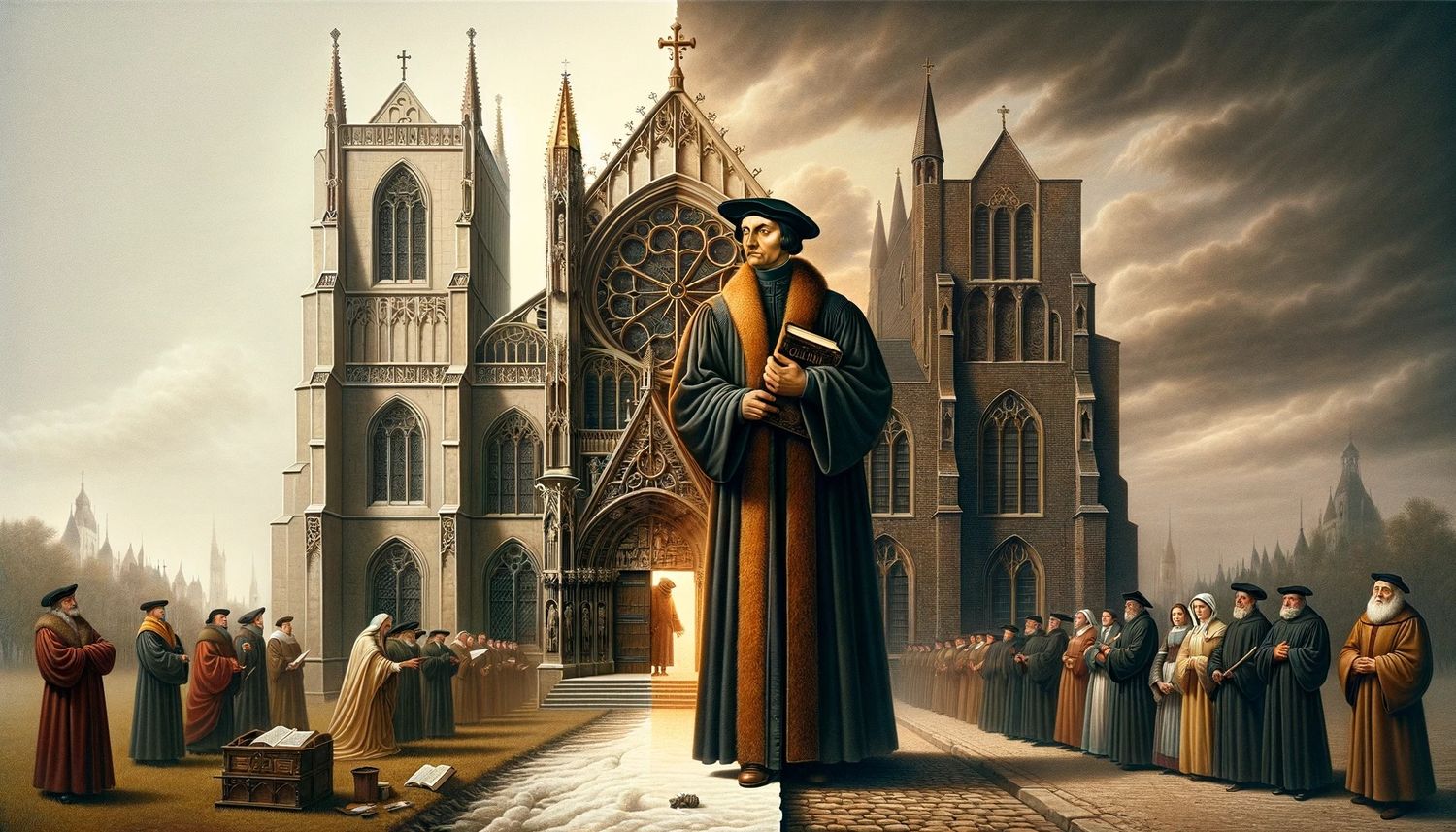

Theology and Spirituality
Which Came First: Catholicism Or Protestantism
Published: February 18, 2024
Ericka Andersen, an editor at Christian.net, expertly merges digital strategy with content creation, focusing on faith and societal issues. Her communication skills enhance the platform's engaging narratives, fostering meaningful dialogue on belief's impact on society.
Discover the origins of Catholicism and Protestantism in this insightful exploration of theology and spirituality. Uncover the historical and theological differences between the two branches of Christianity.
(Many of the links in this article redirect to a specific reviewed product. Your purchase of these products through affiliate links helps to generate commission for Christian.net, at no extra cost. Learn more)
Table of Contents
Introduction
The historical and theological landscape of Christianity is rich and complex, marked by significant events and movements that have shaped the faith into its diverse expressions today. At the heart of this complexity lies the division between Catholicism and Protestantism, two major branches of Christianity that have played pivotal roles in shaping the religious, cultural, and political history of the Western world.
The origins of Catholicism and Protestantism can be traced back to pivotal moments in the history of Christianity, each with its distinct theological, doctrinal, and cultural implications. Understanding the historical context and theological nuances of these two branches is essential for gaining insight into the broader tapestry of Christianity and its impact on societies throughout the centuries.
In this comprehensive exploration, we will delve into the historical origins of Catholicism and Protestantism, examining the key figures, events, and theological developments that have defined these traditions. Furthermore, we will explore the fundamental differences between Catholicism and Protestantism, shedding light on the theological divergences that have contributed to their distinct identities.
As we embark on this journey through the annals of Christian history, we will uncover the profound influence of Catholicism and Protestantism on the course of history, from the Reformation era to the present day. By delving into the historical and theological dimensions of these two branches, we aim to unravel the intricate tapestry of Christianity and gain a deeper appreciation for the enduring impact of Catholicism and Protestantism on the world stage.
Read more: Who Came First: Christianity Or Catholicism
Historical Background of Catholicism
The historical roots of Catholicism can be traced back to the early Christian church, with its foundations firmly established in the teachings of Jesus Christ and the apostles. The term "Catholic" itself derives from the Greek word "katholikos," meaning "universal," reflecting the church's mission to encompass all believers across the world.
During the first few centuries of the Common Era, the Christian community gradually coalesced into a unified body under the leadership of the bishops, particularly the Bishop of Rome, who came to be known as the Pope. This period witnessed the development of key theological doctrines and the establishment of ecclesiastical structures that laid the groundwork for the emergence of Catholicism as a distinct entity within the broader Christian tradition.
One of the defining moments in the early history of Catholicism was the Council of Nicaea in 325 AD, which addressed theological controversies and formulated the Nicene Creed, a statement of faith that articulated essential Christian beliefs. This council played a crucial role in shaping the doctrinal framework of the early church and solidifying its foundational beliefs.
The subsequent centuries saw the expansion of Catholicism across Europe and beyond, facilitated by the missionary endeavors of figures such as St. Patrick and St. Augustine of Canterbury. The conversion of various kingdoms and tribes to Christianity, often intertwined with political dynamics, contributed to the growing influence of Catholicism as a dominant religious force in medieval Europe.
The medieval period also witnessed the flourishing of monasticism, with orders such as the Benedictines, Franciscans, and Dominicans making significant contributions to the spiritual and intellectual life of the church. The establishment of monastic communities and centers of learning played a pivotal role in preserving knowledge, fostering theological inquiry, and advancing the arts and sciences.
The authority of the papacy continued to solidify during the medieval era, reaching its zenith with figures like Pope Gregory the Great and Pope Innocent III, who wielded considerable influence over both spiritual and temporal affairs. The medieval papacy's role in shaping the religious, political, and cultural landscape of Europe cannot be overstated, as it intersected with the rise of powerful monarchies and the tumultuous events of the Crusades.
Overall, the historical background of Catholicism is characterized by a complex tapestry of theological developments, institutional expansion, and cultural influence, laying the groundwork for its enduring impact on the world stage. This rich historical legacy forms the backdrop against which the distinct identity of Catholicism continues to evolve and resonate in contemporary society.
Historical Background of Protestantism
The historical roots of Protestantism can be traced back to the 16th century, a period marked by profound religious, social, and political upheaval in Europe. At the heart of this transformative era was the Protestant Reformation, a movement that sparked a seismic shift in the religious landscape and gave rise to a diverse array of Protestant denominations.
The catalyst for the Protestant Reformation can be attributed to Martin Luther, a German monk and theologian whose bold act of defiance against the Roman Catholic Church set off a chain of events that reverberated across the continent. In 1517, Luther famously nailed his Ninety-Five Theses to the door of the Castle Church in Wittenberg, challenging the church's teachings on indulgences and calling for a return to the primacy of scripture and faith in Christ.
Luther's actions ignited a fervent debate on matters of theology, ecclesiology, and the nature of salvation, leading to a widening rift between his followers, known as Lutherans, and the established Catholic hierarchy. The dissemination of Luther's writings, aided by the advent of the printing press, facilitated the rapid spread of Reformation ideas and galvanized support for reform across various regions.
The Reformation movement gained further momentum with the emergence of other key figures such as John Calvin, Huldrych Zwingli, and Thomas Cranmer, each contributing unique theological insights and advocating for distinct forms of religious expression. The theological diversity within the Reformation gave rise to various Protestant traditions, including Calvinism, Zwinglianism, Anglicanism, and Anabaptism, each with its doctrinal emphases and ecclesiastical structures.
The proliferation of Protestant movements led to significant theological and ecclesiastical realignments, as new churches and denominations were established, challenging the hegemony of the Catholic Church. The translation of the Bible into vernacular languages, the emphasis on the priesthood of all believers, and the reconfiguration of liturgical practices became hallmarks of Protestant worship and spirituality.
The impact of the Protestant Reformation reverberated beyond matters of faith, influencing the realms of politics, education, and individual freedoms. The rise of nation-states and the decentralization of religious authority reshaped the geopolitical landscape, while the establishment of Protestant educational institutions fostered intellectual inquiry and the advancement of knowledge.
In essence, the historical background of Protestantism is intricately woven into the fabric of the Reformation era, characterized by a fervent quest for religious renewal, doctrinal diversity, and the reconfiguration of societal norms. The enduring legacy of the Protestant Reformation continues to shape the beliefs, practices, and cultural ethos of Protestant communities worldwide, underscoring its enduring impact on the tapestry of Christian history.
Key Differences Between Catholicism and Protestantism
The theological disparities between Catholicism and Protestantism have been central to the historical and doctrinal schism that has defined these two major branches of Christianity. These differences encompass a wide array of theological, ecclesiological, and liturgical aspects, reflecting divergent interpretations of scripture, authority, and the nature of salvation.
One of the fundamental distinctions lies in the understanding of authority and tradition. Catholicism upholds the authority of sacred tradition alongside scripture, viewing the Magisterium, the teaching authority of the church, as essential for interpreting divine revelation. In contrast, Protestantism emphasizes sola scriptura, the belief in the sole authority of scripture as the primary source of divine guidance and doctrinal truth.
The doctrine of justification has also been a point of contention, with Catholicism emphasizing a synergistic view of salvation, wherein faith and good works cooperate in the process of justification. In contrast, many Protestant traditions adhere to the principle of sola fide, affirming that justification is by faith alone, apart from works, as articulated by key figures such as Martin Luther and John Calvin.
The sacramental theology of Catholicism and Protestantism diverges significantly, particularly in the understanding of the Eucharist. Catholicism affirms the doctrine of transubstantiation, teaching that the bread and wine in the Eucharist become the actual body and blood of Christ. In contrast, most Protestant traditions maintain symbolic or spiritual understandings of the Eucharist, rejecting the notion of transubstantiation.
Ecclesiastical structures and the understanding of the church also exhibit notable differences. Catholicism upholds the belief in the visible, hierarchical nature of the church, with the Pope serving as the supreme authority and the sacramental system administered through ordained clergy. In contrast, Protestantism encompasses diverse ecclesial models, including episcopal, presbyterian, and congregational forms, often emphasizing the priesthood of all believers and congregational autonomy.
The veneration of Mary and the saints, the use of religious imagery, and the practice of penance and purgatory are additional areas of disparity between Catholicism and Protestantism, reflecting divergent theological emphases and doctrinal formulations.
These key differences underscore the theological and ecclesiological complexities that have shaped the distinct identities of Catholicism and Protestantism, contributing to their enduring influence and theological diversity within the broader tapestry of Christianity.
Influence of Catholicism and Protestantism on History and Culture
The influence of Catholicism and Protestantism on history and culture is profound and far-reaching, encompassing a myriad of domains that have shaped the course of human civilization. From the realms of art, architecture, and music to the spheres of politics, education, and social ethics, the impact of these two major branches of Christianity has left an indelible imprint on the tapestry of history and culture.
Catholicism, with its rich artistic and architectural heritage, has played a pivotal role in shaping the aesthetic landscape of Western civilization. The grandeur of cathedrals, the exquisite beauty of religious art, and the transcendent sounds of sacred music bear witness to the enduring legacy of Catholicism's influence on artistic expression. The patronage of renowned artists, the commissioning of masterful works, and the cultivation of a distinct visual and auditory language have contributed to the enrichment of cultural heritage across the centuries.
Moreover, the historical and political impact of Catholicism is evident in its interactions with various monarchies, empires, and geopolitical dynamics. The alliance between the papacy and secular powers, the establishment of papal states, and the interplay of religious authority and political governance have left an indelible mark on the annals of history, shaping the contours of medieval and early modern Europe.
On the other hand, Protestantism's influence on history and culture is characterized by its impact on the realms of education, governance, and societal values. The emphasis on literacy, the proliferation of vernacular translations of the Bible, and the establishment of Protestant educational institutions have contributed to the advancement of learning and the democratization of knowledge.
Furthermore, the Protestant work ethic, with its emphasis on diligence, frugality, and individual responsibility, has intersected with economic and social developments, shaping the ethos of industriousness and enterprise in Protestant-influenced societies.
The theological and ecclesiastical differences between Catholicism and Protestantism have also reverberated through the corridors of history, giving rise to religious conflicts, theological debates, and the delineation of cultural identities. The impact of the Reformation, the Council of Trent, and the ensuing religious wars has left an enduring legacy on the religious, political, and cultural landscapes of Europe and beyond.
In essence, the influence of Catholicism and Protestantism on history and culture transcends mere doctrinal or theological domains, permeating the fabric of human experience and leaving an indelible mark on the collective consciousness of societies worldwide. The enduring impact of these two major branches of Christianity underscores their profound significance in shaping the historical narrative and cultural ethos of the Western world.
Read more: Why Catholicism Is Better Than Protestantism
Conclusion
In conclusion, the historical and theological trajectories of Catholicism and Protestantism have woven a rich tapestry of religious, cultural, and historical significance that continues to resonate in contemporary society. The origins of Catholicism, rooted in the early Christian church and shaped by pivotal events such as the Council of Nicaea, laid the groundwork for its enduring influence on the religious, cultural, and political landscapes of Europe and beyond. The authority of the papacy, the flourishing of monasticism, and the interplay of religious and secular powers during the medieval era underscore the multifaceted impact of Catholicism on the course of history.
Conversely, the emergence of Protestantism during the 16th century, catalyzed by the bold actions of Martin Luther and other reformers, heralded a transformative era marked by theological diversity, ecclesiastical realignments, and the reconfiguration of societal norms. The Protestant Reformation's emphasis on sola scriptura, the priesthood of all believers, and the decentralization of religious authority engendered a seismic shift in the religious landscape, giving rise to a myriad of Protestant denominations and theological traditions.
The key differences between Catholicism and Protestantism, encompassing matters of authority, salvation, sacramental theology, and ecclesiology, underscore the theological complexities that have defined these two major branches of Christianity. These theological disparities have not only shaped the doctrinal identities of Catholicism and Protestantism but have also reverberated through the annals of history, influencing cultural expressions, political dynamics, and societal values.
The enduring influence of Catholicism and Protestantism on history and culture is evident in their contributions to artistic expression, architectural heritage, educational advancements, and the shaping of societal values. The interplay of these religious traditions with political governance, the arts, and the broader cultural ethos has left an indelible imprint on the collective consciousness of societies worldwide, underscoring their profound significance in shaping the historical narrative and cultural ethos of the Western world.
As we reflect on the historical origins, theological nuances, and cultural impact of Catholicism and Protestantism, we gain a deeper appreciation for the enduring legacy of these two major branches of Christianity. Their influence transcends mere doctrinal or theological domains, permeating the fabric of human experience and leaving an indelible mark on the collective consciousness of societies worldwide. The intricate tapestry of Catholicism and Protestantism continues to unfold, inviting us to explore the enduring impact of these traditions on the course of history and the cultural ethos of the Western world.


